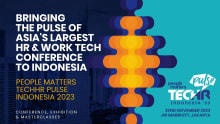Decoding human interaction with sociometers: A new face of AI

Charles Darwin wrote in his book The Descent of Man, “Individuals which took the greatest pleasure in society would best escape various dangers, while those who lived solitary, would perish in greater numbers” (1871). Group activities including communications never fail to provide enigmatic results. Group communication and its capabilities to produce synergistic results have been the paramour of researchers. Humans have evolved with a common medium to communicate i.e. language. But how often do we communicate through words? A conversation can be broken down into tangible and intangible aspects. Although humans tend to be the talkative species, we put little faith in the words and more on the honest signals; we have a second channel of communication that revolves around social relations (Adolf & Stehr, 2015). Honest signals include human behavioral signals like facial expressions, body gestures, non-linguistic vocalizations, and vocal intonations (Pantic et al. 2007). A study of these gestures can provide a meaningful understanding of a situation and it opens an ocean of potential research in predictive analysis. Organizational research has tried to capitalize on group communication for optimal organizational performance. Most studies have incorporated the traditional methods to deconstruct group communication; surveys and observation have resulted in a subjective understanding of reality. A new technique is in vogue to analyze group communication from a rather scientific perspective, incorporating a sociometer to measure and analyze the honest signals.
A sociometer is a badge developed at the MIT Human Dynamics Lab, it is capable of producing sociometrics which comprises the data reflecting the intangible aspect of the communication i.e., the vocal features; body movements; relative location (Pentland, 2012). Sociometric badges are capable of measuring face to face communication, conversational time, prosodic style, physical activity, physical proximity (Pentland, & Olguin, 2009). Honest signals are oblivious pointers shown amid social communications. Individuals show blends of genuine signs when they expect distinctive social jobs, for example, exploring, listening, teaming, and leading. For example, the social job of exploring joins low consistency and high movement. The job of listening shows low consistency and low movement. The teaming job requires a blend of high impact, high mimicry, and high consistency. While receiving the job of leading there are high dimensions of impact, high movement, and high consistency.
How does a sociometer operate?
- Physical activity; A 3-axis accelerometer signal should be sampled at 30 Hz to capture the range of human movement since 99% of the acceleration power during daily human activities is contained below 15 Hz (Mathie et al. 2004).
- Speech Activity: The speech signal must be sampled at fs _ 8000 Hz since the voice frequency band ranges from 300 to 3400 Hz approximately. The voiced speech of a typical adult male has a fundamental frequency between 85 and 155 Hz, and that of a typical adult female between 165 and 255 Hz. (Baken, 1987).
- Face to face interaction: Infrared (IR) transmissions can be used as a proxy for the detection of face-to-face interaction between people (Choudhury & Pentland 2003).
- Proximity: The Radio Signal Strength Indicator (RSSI) is a measure of the signal strength between transmitting and receiving devices. An average threshold can be determined experimentally to detect when two people are close to each other by collecting RSSI measurements over an extended period under different environmental conditions.
- Social Network: Social network attributes can be calculated using the number of IR and radio detections as the link strength between two actors. We will be using conventional social network analysis as described by Wasserman & Faust (2005).
Alex has identified these honest signals based on the evolutionary evidence, he points out four types of signals including influence, mimicry, activity, and consistency (2008). He further explains influence as the extent to which one person is affected by the speech patterns of another person. Sociometric badges are well equipped to detect overlapping speech patterns and help to identify the dominant one. Mimicry is explained as reflexive copying of one person by another during a conversation, resulting in an unconscious back and forth trading of smiles, interjections, and head nodding. Activity explains the interest and excitement. Consistency is explained in terms of a consistent mental focus resulting in a lower variability. This signal can be captured by analyzing the timing, energy, and variability of speech and body movement patterns. Analysis of the honest signals can decode the conversational dynamics and provide us with the linkages; we can also identify the dominant, high influencing person.
Implications for the organization
We are living in a world where we leave digital breadcrumbs of everyday behavior. (Adolf & Stehr, 2015). Often an item kept in the basket on a particular website pops up as an advertisement on another website. Our online activities are data points for third parties, later to become part of big data and analyzed to derive meaningful patterns. Organizations are not exempt from this wave, two forms of networks dominant in an organizational setting are digital network and face to face network (Lepri et al., 2012). The digital network comprises extracting conversational data from e-mails, blogs, chats, instant messaging, and phone calls to examine social network structure (Aral, Brynjolfsson, & Alstyne, 2006). Though the digital network acts as a primary form of communication, face to face communication cannot be ignored. Face to face communication represents an important form of the network resulting in information exchanges, socialization and informal communication (Whittaker, Frohlich, & Daly-Jones, 1994).
Organization data mining endows the user with the quintessential tools and techniques to enhance the knowledge and decision-making process by converting the intangible aspect of the organization into knowledge points (Nemati & Barko). The sociometric badge will help the organization to understand the internal ergonomics of a group and provide us with the patterns to re-engineer the design in a way that ensures enhanced organizational performance. The sociometer has empowered us to recognize social patterns, interrelationships, visualize the organizational dynamics.
Virtuality and the vague team structures play an important role in comprehending member interdependence. Measuring performance becomes a difficult task as members move more fluidly and juggle team membership. An organization faces new impediments as they embolden self-forming and self-governing teams. As the how and why of collaboration evolves, new opportunities arise to assess methods that can capture the nuances of a team and create synergies. Earlier research on face-to-face communication shows evident proof to support the fact that verbal interaction patterns can lead to better understanding and predicting team performance (Curhan & Pentland, 2007).
Finally, sociometric badges are also scalable and record continuous streams of interaction data for indefinite periods. The captured data makes a couple of things plausible: (a) objective data-supported real-time interventions and (b) extensive causal analyses of team processes, their mediators, moderators, and outcomes. In particular, real time data along with the existing data in forms of diaries and surveys, holds a great potential to explore potential discrepancies between self-reported and objective data capture (Steger, Dik, & Duffy, 2012). Research in the field of social dynamics provides access to untapped pool of knowledge.
Not much has been explored in Indian organizational context. A little investment in sociometric badges can help to reorganize, comprehend, predict and channelize team performance.
















